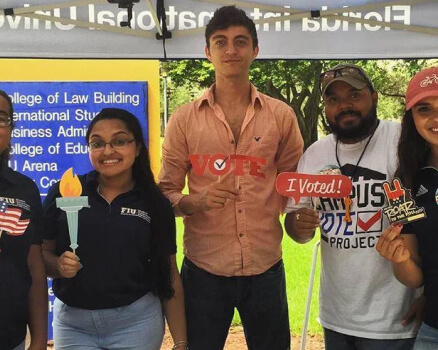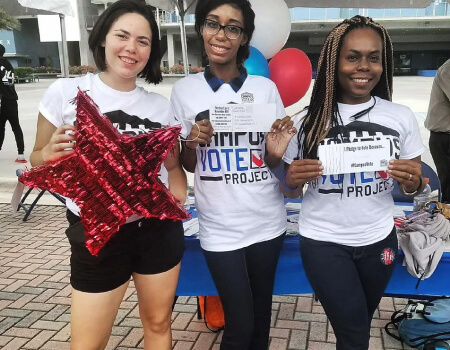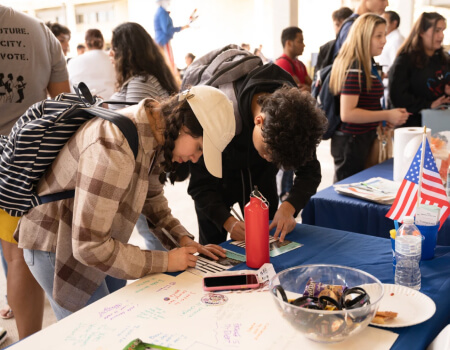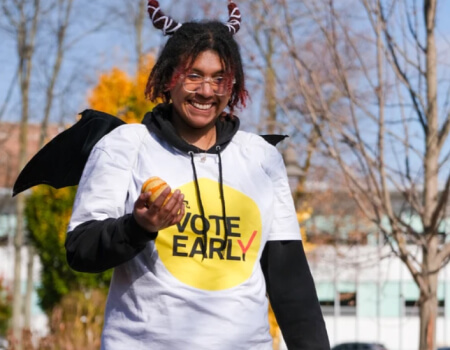Historically, young adults have voted at lower rates than older cohorts. They are also the newest members of our democracy, move more frequently, are less likely to have a driver’s license, and are less likely to be contacted directly by political campaigns then older age groups, all of which are barriers to registering and voting.
We can help change these historical trends and continue to grow the increasing voter turnout rates and increasing share of the electorate that is younger voters by working with community colleges and universities to welcome the nearly 20 million students they serve each year into the democratic process. Young people cite barriers such as missing a deadline or lacking other information as the reason they did not register at much higher rates than older age groups. Students also cite trusting their college or university over other institutions so by working with community colleges and universities to provide students nonpartisan opportunities to register to vote, learn about the issues and candidates on the ballot, and receive accurate information on deadlines and processes for voting absentee, by-mail, early, or on Election Day we can empower students to become life-long voters and active citizens.
Young adults (ages 18-29) made up about 21% of the voting eligible population in 2014, but voter turnout for this demographic has reached record lows in recent years, sitting at 17% in recent years. In midterm elections like last year and in off-year elections like 2015, local offices are on the ballot and can be decided by a matter of a few votes. Local offices and issues have a direct impact on a student’s home and college community. Officials make decisions on topics like student debt, funding for higher education, and the economy.






















Campus Vote Project is a project of Fair Elections Center. Visit Site